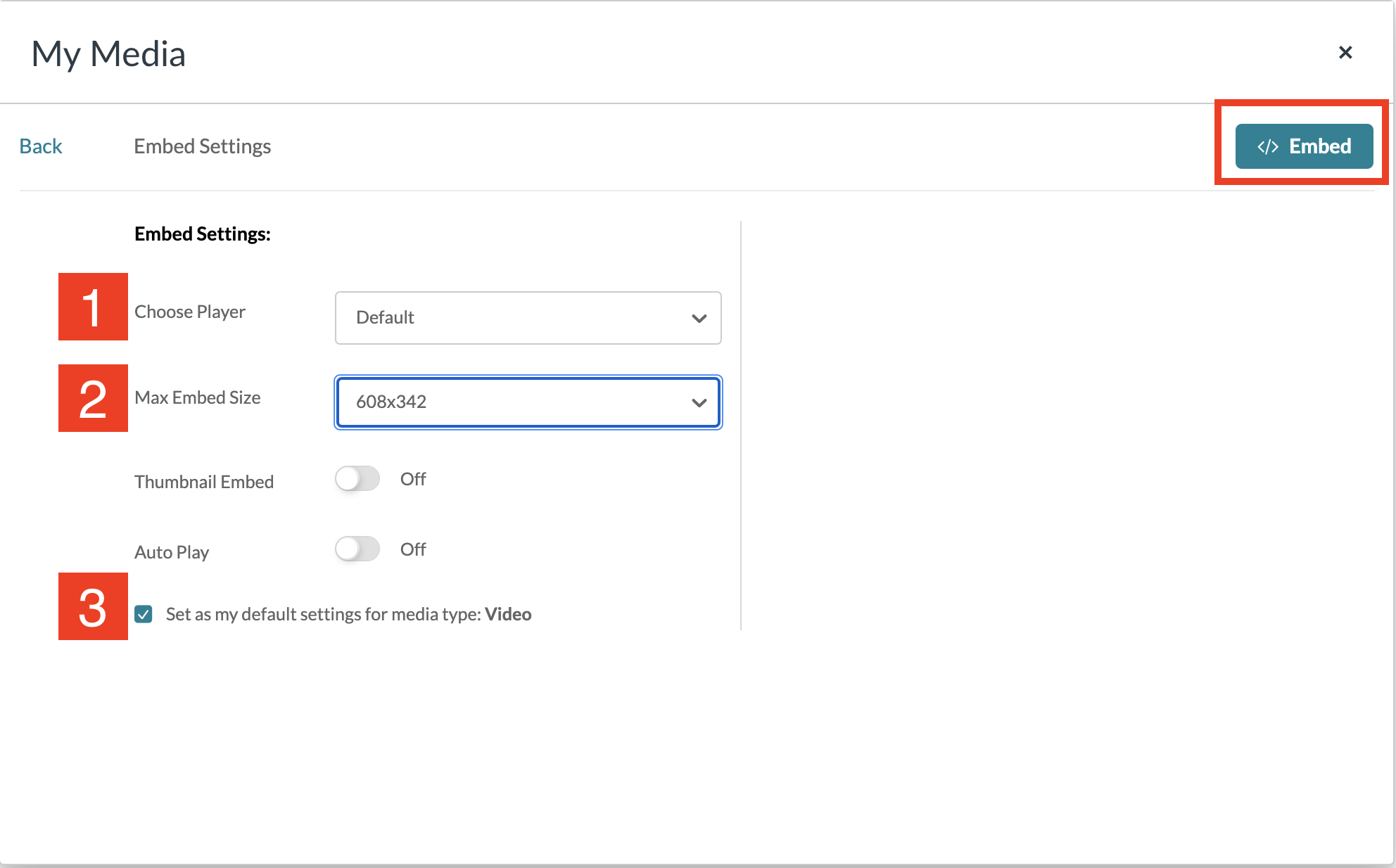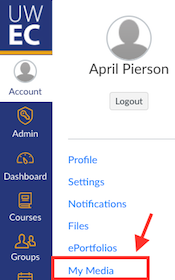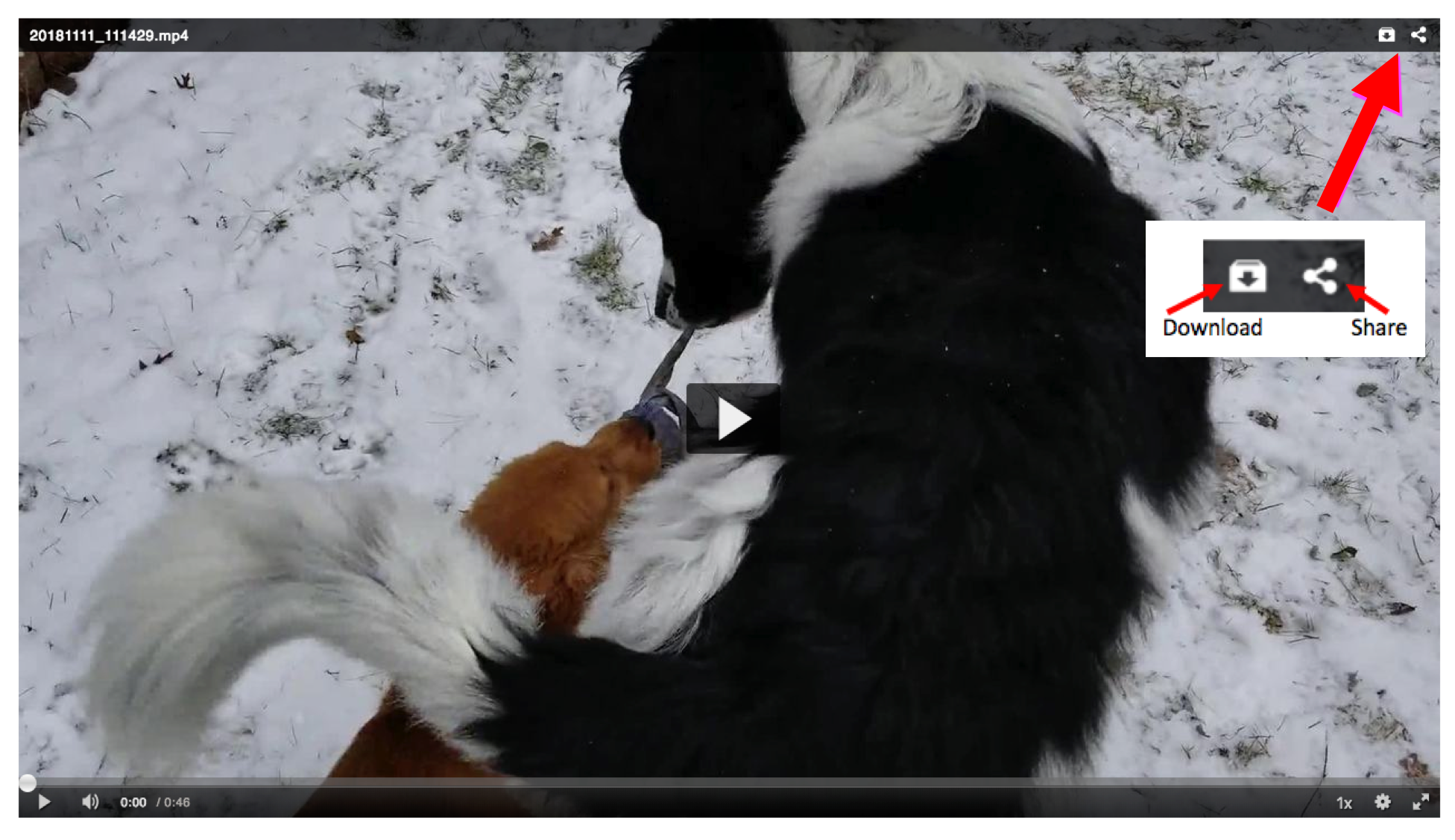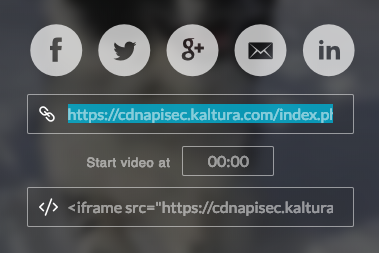The questions below should direct you to the appropriate set of instructions based on what you need to complete. Please note that Kaltura is often called "My Media" in Canvas. You can upload audio, video, and images as "media."
1. Is your media already uploaded to Kaltura My Media?
- Yes, it's already uploaded:
- No, I need to upload it (continue to next question)
2. Do you know where in a Canvas course you want to share your media? (i.e., the specific page, discussion, etc.)
On a phone, iPad, or other mobile device? Use your device's browser (Chrome is recommended) to upload following the instructions below rather than the Canvas or Kaltura apps. Some steps of the upload process may require pinching and zooming to accurately click small buttons on a phone. Students, consider whether uploading directly to Canvas might work for you (more information).
Upload and Embed Media in a Canvas Course
Instructors and students can upload and share media in many areas of Canvas such as Assignments, Discussions, Pages, Quizzes, and Syllabus (access varies based on student/instructor role).
- Login to Canvas in a browser such as Google Chrome or Firefox and access the Canvas tool in which you are sharing/embedding your media (the Assignment, Discussion, Page, etc.). Click Edit, Reply, Upload, etc. to access the Rich Content Editor. The instructions are based on the assumption that you know how to create a page, post a reply to a discussion, etc. If you have trouble with that aspect, contact Canvas Help and return to these instructions.
- In the New Rich Content Editor, click the My Media icon (pictured below) to access your My Media repository. If you are working on a smaller screen, select the three dots to access the My Media icon.

- To upload a file, click Add New on the top right (if it is already uploaded, skip to "embed already uploaded media to a Canvas Course").

- Select Media Upload
- Tip: You can also record using Kaltura Capture or the webcam recorder through this interface on a computer.
- Check the box to agree to the terms and conditions.
- On the Upload Media page, drag and drop your file or click the blue button “+ Choose a file to upload."
- Find the file on your computer and double click or click "Open" to upload.
- The blue progress bar will turn green when the upload is complete. Large files may take minutes to upload. Kaltura has a 2GB limit, but sometimes the Firefox browser will allow larger uploads. A good Wi-Fi connection is very helpful.
- Ensure the name is accurate. The name of the uploaded file will be used by default.
- Before you embed your media, click the gear icon to set up default settings for all media.
- In the Embed Settings popup, there are choices in how you embed your media.

- Choose Player: Allows you to choose which player you would like to use. Choices range from the default player, download and share player, simplified player and transcript player. Most embeds should use the default player.
- Max Embed Size: The size in which the media player can be selected. The larger the number the larger the video will embed.
- If you would like all videos to embed within the settings selected, click the "Set as my default setting for media type: video" box.
- Click the blue Save and Embed button on the top right.

- Finish your reply/page/assignment etc. and Post/Save/Save and Publish.
Embed Previously Uploaded Media in Canvas
- Access the Canvas tool in which you are sharing/embedding your media (the Assignment, Discussion, Page, etc.). Click Edit, Reply, Upload, etc. to access the Rich Content Editor.
The instructions are based on the assumption that you know how to create a page, post a reply to a discussion, etc. If you have trouble with that aspect, contact Canvas Help and return to these instructions. - In the Rich Content Editor, click the My Media icon (pictured below) to access your My Media repository. If you are working on a smaller screen, select the three dots to access the My Media icon.

- Find the file you want to embed in your list of media. The most recently added are at the top.
- TIP: If you have a lot of media, you may need to search for the media name.
- Before you embed your media, click the gear icon to set up default settings for all media.
- In the Embed Settings popup, there are choices in how you embed your media.

- Choose Player: Allows you to choose which player you would like to use. Choices range from the default player, download and share player, simplified player and transcript player. Most embeds should use the default player.
- Max Embed Size: The size in which the media player can be selected. The larger the number the larger the video will embed.
- If you would like all videos to embed within the settings selected, click the "Set as my default setting for media type: video" box.
- The media will be embedded into your page/assignment/discussion, etc. Click the appropriate action (Post/Save/Save & Publish, etc.)
NOTE for instructors: If you do not want the media linked individually under modules or if your page is getting too long with many embeds, you can also create a page in the Pages navigation area of Canvas and link to it within another page or you can share a URL.
Upload Media to Your Canvas Repository, Not to a Specific Course
- Login to Canvas.
- Click Account in the global navigation on the left.

- Select My Media.

- If this is your first time using Kaltura within Canvas, you will need to click Authorize.
- Click Add New on the top right.

- Select Media Upload.
- On the Upload Media page, click Choose a file to upload.
- Find the file on your computer and double click the file or click Open to upload
- The blue progress bar will turn green when the upload is complete. Large files may take minutes to upload.
- Ensure the name is accurate. The name of the uploaded file will be used by default.
- (Optional) If you would like to share your media with others, you can add them as collaborators.
- Select the box to agree to the terms and conditions.
NOTE: This media is only visible to you. To share it, continue to the instructions below to share a URL or embed it in Canvas.
- Login to Canvas
- Click Account in the global navigation on the left

- Select My Media

- Find the media you want to share.
- Click on the thumbnail or the name to open it.
- Once you have clicked on the media, a download and share icon will appear in the upper right-hand corner of the screen.

Share
1. Click the Share icon on the top right corner (pointed out in the screenshot above).
2. Click in the URL area and copy it.

NOTE: It is possible to set a start time for the URL if you would like it to start playing at a later time rather than the beginning.
Tip: According to usability and web accessibility practices, it is important for the link text to make sense without the surrounding sentences or content. The link should convey its function and purpose of the link. Avoid text like “Click here,” “more,” or “Read more.” When linking full URLs (links), read it aloud to ensure it makes sense for a screen reader to read.
IMPORTANT: Do not use the Share features below the media; they will not work.
Download
Click on the Download icon with the downward-facing arrow. You will be prompted to save it to your computer.